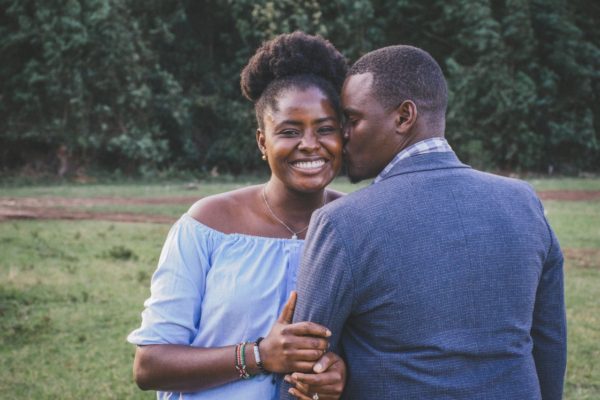The Dance Takes Two: Two Partners and Two Actions
Take a moment to consider the recent Valentine’s Day holiday; it gives us a perfect metaphor for what initiates, and perpetuates, a cycle of loving movement with a partner. You may recall a time when you gave someone, or someone gave you, a Valentine’s Day card. This may have been when you were very young, and you probably gave this project a bit of effort, and you hoped you would get a special response. You wanted to send someone a message that you felt affection for them, and you may have dreamed of a hug and a kiss in response (or even just a smile). If they responded in the way you hoped, you felt some of the delight of love.
You could certainly say that when you received a kiss in response to your Valentine that your partner “turned toward” you. But pause here and look at what happened: you did something so that your beloved would have something to turn toward! All you did was create and deliver a Valentine—but this was a big and important step; such actions can often go unnoticed and unappreciated. You did what Dr. Sue Johnson calls “reaching toward” your partner. This initiates and allows for a complete cycle in the dance, the Tango of love.
Here is the cycle: One partner reaches out toward the other, and in response, the beloved turns toward this initiatory movement by reaching back, and thus conveys love in return. It’s that simple! There are, of course, an infinite variety of ways to do this, but they’re all essentially composed of this basic cycle of dance steps.
Bids and Responses
Renowned relationship researcher Dr. John Gottman calls these elementary components of the dynamics of human relationship “bids and responses.” A bid, or reaching toward our partner, initiates a cycle of the dance. It says, “I am here and I want to be with you and move with you in connection, sharing, and discovery of what we both experience and what is important to each of us.” Dr. Gottman also describes three basic responses to bids. Again, we have already begun to explore the first one: “turning toward.” In a future article I will present information about the other two, “turning against” and “turning away.” As you might guess, the latter two responses, though very common, do not foster a loving dance. In fact, they can result in problems, hurts, and even the end of the dance (and, therefore, deserve thorough coverage in coming articles about how to repair when relationships are not working as we’d hoped).
A Valentine is only one example of the infinite possible bids that we could offer our beloved. Here are just a few others:
- “How did your day go?”
- “I had a bit of a problem at work, could I tell you about it?”
- “I could sure use your attention right now, because something is really hurting!”
- “Hey, love, could we talk for a minute?”
- “I am very anxious about a talk I have to give. Could you come with me tonight?”
- “Would you like some help cooking dinner?”
Who knows what great things could happen in response to such ordinary, everyday bids or words of initiating the cycle of love! (Especially that last one about helping with dinner. Watch out!)
In truth, failed bids are occurring all the time. This often comes at enormous cost to all of us, because these far too often go unnoticed; the last several decades of research on human bonding offers powerful evidence that our relationships are based on the success of these many small everyday bids and responses. This has certainly been proven to me in my personal relationships, and also in my role as a therapist with couples as well as families and individuals.
So what does this call upon us to do, if we want to foster love (and prevent the loss of the dance) with our beloved? It is simple: we are called to learn the basic dance steps by practicing bids and responses. This does not mean we will learn this without some effort, observation, practice, trial and error. In fact, failures are fine, as long as they are part of learning the dance and get repaired when necessary. A therapist can be very helpful in supporting this learning and practice, especially when a lot of hurt has resulted from not knowing the basic moves of love (which is normal), or when much repair is needed.
In any case, the truth is that loving behaviors can be learned and practiced. May you enjoy making Valentine-style bids all year long. And may your partner turn toward you. If they do, the dance is on!
Need support putting these ideas into practice? Join Gal and Liron for Love Made Simple: A Weekend Workshop for Couples Who Want MORE. You won’t want to miss this chance to connect with like-minded couples and gain skills to build a love that lasts!
Robert Gardner, MFT
As a licensed MFT, teacher, and lifelong student of loving relationship, Robert is devoted to supporting your relationship and its safe development. He offers a balance of attention, welcoming, and empathy along with reflective feedback, skills education, in-session experiential process, and homework. Robert’s work as a therapist is informed and inspired by four decades of daily Buddhist study and practice.

 Call Us Now
Call Us Now




